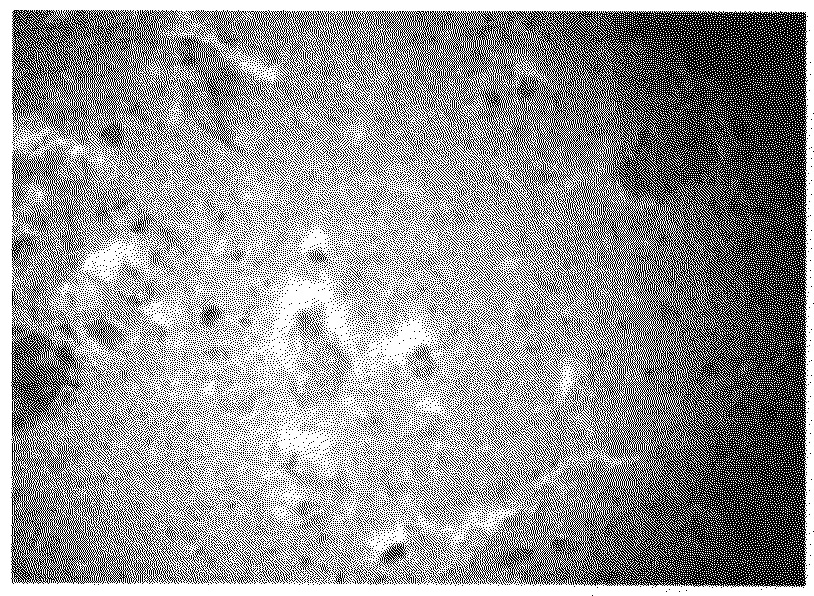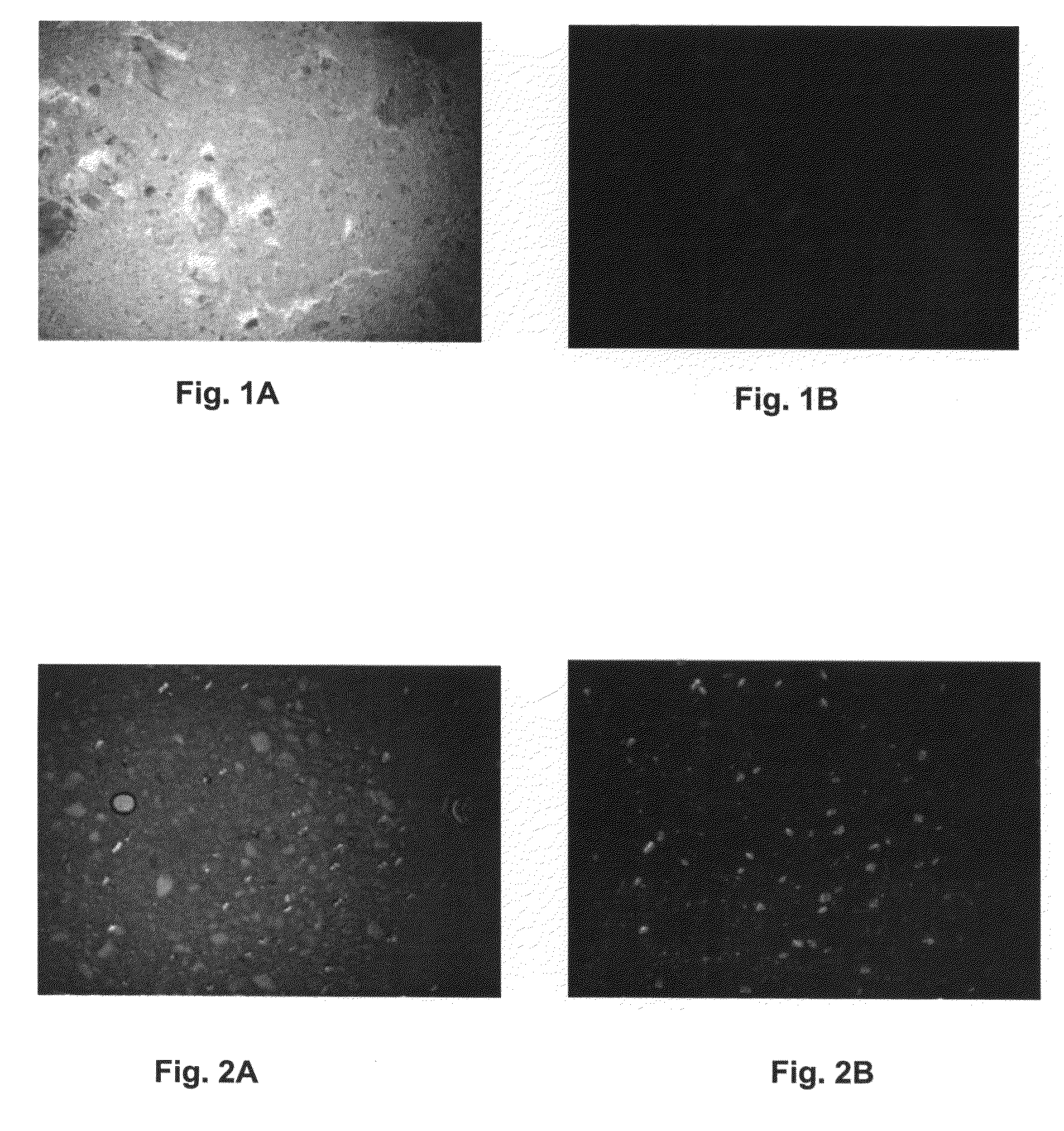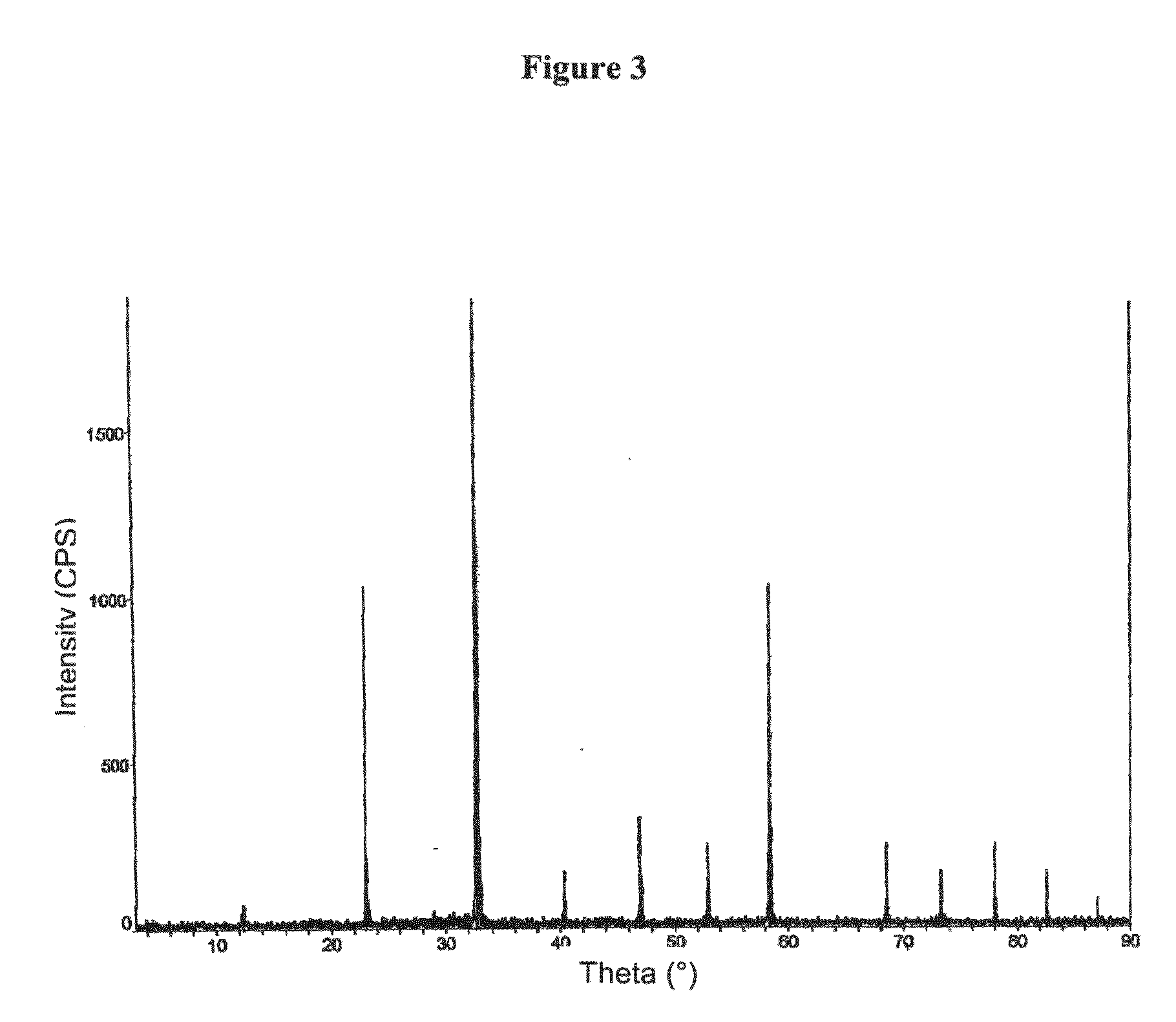Washing-fast smoldering-suppressing compositions
a composition and smoldering technology, applied in the field of flame retardation and smoldering suppression, can solve the problems of limited performance of smoldering suppressing agents, and achieve the effect of resisting extensive washing and cleaning and non-damaging the aesthetical and textural properties of fabrics
- Summary
- Abstract
- Description
- Claims
- Application Information
AI Technical Summary
Benefits of technology
Problems solved by technology
Method used
Image
Examples
example 1
Preparation of Calcium Ammonium Phosphate Compositions from CaCl2
[0311]General Procedure: Calcium ammonium phosphate compositions were prepared using various compositions of phosphoric acids as the starting materials, according to the general procedure outlined below:
[0312]Phosphoric acid and NH4OH (22% in water) were simultaneously added, while maintaining a pH of about 9, to a mechanically stirred, ice-cooled solution containing water and CaCl2, keeping the temperature at about 10-20° C. during the reaction. During the addition, the pH was kept around 8.5 by adding NH4OH, reaching about 8 at the end of the addition. The reaction mixture was thereafter stirred for 1 hour at 20° C.
[0313]Alternatively, the reaction mixture was stirred for 1 hour at 5° C.
[0314]Based on the general procedure described hereinabove, several compositions were prepared as follows:
[0315]Preparation of Calcium Ammonium Monophosphate (CaNH4PO4):
[0316]The process described in the general procedure above, was ...
example 2
Preparation of Calcium Ammonium Phosphate Compositions from CaCO3 (CaASP*)
[0327]Following the procedure outlined in Example 1 hereinabove, CaASP was prepared by using CaCO3 instead of CaCl2. The product obtained in this process is referred to herein as CaASP*.
[0328]In an exemplary procedure, CaASP* was prepared as follows:
[0329]Phosphoric acid (60 grams) was slowly added to a mechanically stirred solution containing water (200 grams) and CaCO3 (33 grams), and the reaction mixture was stirred for about 15 minutes until a clear solution was obtained. During the addition, release of CO2 was observed. NH4OH (32-35 ml of a 22% solution in water) was then added to the mixture to achieve pH around 7, while maintaining the reaction temperature at around 20° C., and the reaction mixture was stirred for another hour, resulting in a one phase free flowing thick gel product.
[0330]The solids percentages were determined to be around 32% by weight. The viscosity of the product was determined to be...
example 3
Preparation of Calcium Ammonium Superphosphate Compositions (CaASP**)
[0334]Following the procedure outlined in Example 1 hereinabove, CaASP was prepared by using Ca(OH)2 instead of CaCl2. The product obtained in this process is referred to herein as CaASP**.
[0335]In an exemplary procedure, CaASP** was prepared as follows:
[0336]Phosphoric acid (60 grams) was slowly added to a mechanically stirred solution containing water (200 grams) and Ca(OH)2 (25 grams), in an exothermic reaction, and the reaction mixture was stirred for about 15 minutes. NH4OH (35-37 ml of a 22-24% solution in water) was further added to the mixture to achieve pH around 7.5, keeping the reaction temperature at around 20° C., and the reaction mixture was stirred for another hour, resulting in a one phase free flowing thick gel product.
PUM
| Property | Measurement | Unit |
|---|---|---|
| temperature | aaaaa | aaaaa |
| flame time | aaaaa | aaaaa |
| flame time | aaaaa | aaaaa |
Abstract
Description
Claims
Application Information
 Login to View More
Login to View More - R&D
- Intellectual Property
- Life Sciences
- Materials
- Tech Scout
- Unparalleled Data Quality
- Higher Quality Content
- 60% Fewer Hallucinations
Browse by: Latest US Patents, China's latest patents, Technical Efficacy Thesaurus, Application Domain, Technology Topic, Popular Technical Reports.
© 2025 PatSnap. All rights reserved.Legal|Privacy policy|Modern Slavery Act Transparency Statement|Sitemap|About US| Contact US: help@patsnap.com



